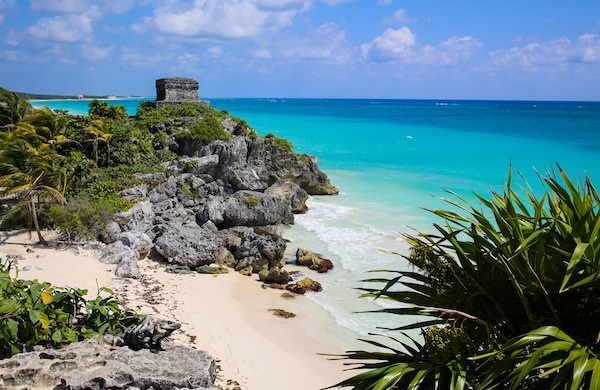The Five Best National Parks to Visit in Winter
Contrary to what you might think, the 58 national parks in the United States don’t go into hibernation once winter rolls around. Several parks—especially in hot climates—actually get better when temperatures cool off a little, allowing visitors a chance to enjoy the scenery without the extreme heat. Here are our picks for the five best national parks to visit in the winter.
1. Biscayne National Park | Florida
More than 95% of Biscayne National Park’s 172,000 acres are underwater, so you’ll need a vessel of some sort to explore this park situated just south of Miami. Offshore barrier reefs—home to more than 500 species of fish—provide some of the best snorkeling and scuba diving in the country. Go for a dive along the Maritime Heritage Trail to explore six historic shipwrecks. If you prefer to stay on dry land, you can hike the entire length of Elliott Key (about 6 miles) or picnic on the sandy shores of Boca Chita Key.
Why visit in winter? It’s the best time to spot a manatee. The beloved sea cows are especially prevalent from November through March.
Stay in a historical art deco hotel or swanky oceanfront resort in nearby Miami.
2. Death Valley National Park | California
Death Valley nabbed the record of “Hottest Place on Earth” when it reached a scorching 134 degrees Fahrenheit in July 1913. Mercifully, temps cool down to the upper 60s in winter, which is why it’s the park’s busy season. Lace up your hiking boots and trek past otherworldly sand dunes, salt flats, and snow-capped mountains. The ominously named Desolation Canyon hike is actually an ideal introduction to Death Valley—it’s a 3-mile walk through a narrow canyon and colorful badlands.
Why visit in winter? Your skin won’t melt.
Stay in Las Vegas, which is only a two-hour drive away. You can tour the desert by day and play the slots at night—or, if you’re taking a family vacation, see one of the best kid-friendly shows in Vegas instead.
3. Big Bend National Park | Texas
Big Bend National Park hugs the border of the United States and Mexico, following the natural boundary formed by the Rio Grande. Embark on a half-day float down the river or set out on hiking trails winding through the desert, alongside the water, and through the Chisos Mountains.
Why visit in winter? Strenuous activities like mountain biking and hiking are a lot more fun when the temperatures are bearable.
Stay in San Antonio or El Paso and road-trip it to a gateway town (such as Marathon) close to the park’s entrance.
4. Everglades National Park | Florida
Everglades National Park—the largest subtropical wilderness in the United States—is meant to be experienced in winter, when it’s significantly less humid than other times of the year. The intricate web of cypress swamps, mangroves, and wet prairie ecosystems support several endangered species, including the manatee, American crocodile, and Florida panther. Traverse the park on canoe trails or Everglades airboat tours.
Why visit in winter? So many reasons—less humidity, fewer mosquitoes, and more wildlife, especially migratory birds settling in for the winter.
Stay in nearby Miami or venture further into the Atlantic and stay in the Florida Keys.
5. Channel Islands National Park | California
The underappreciated Channel Islands National Park—which is comprised of five islands off the coast of southern California—supports 145 unique plant and animal species that can be found nowhere else on earth. Take a wildlife-watching boat tour for a chance to see gray whales, elephant seals, and California sea lions. For the park’s most iconic view (pictured above), hit the trail to Inspiration Point on Anacapa Island.
Why visit in winter? The best time to spot a gray whale is December through April.
Stay in a charming coastal inn in Santa Barbara.
Find more vacation inspiration on the The Guide:
 |
|
| These Active Caribbean Vacations Beat Beach Bumming by a Mile | The 15 Best Vacation Spots for 2017 |